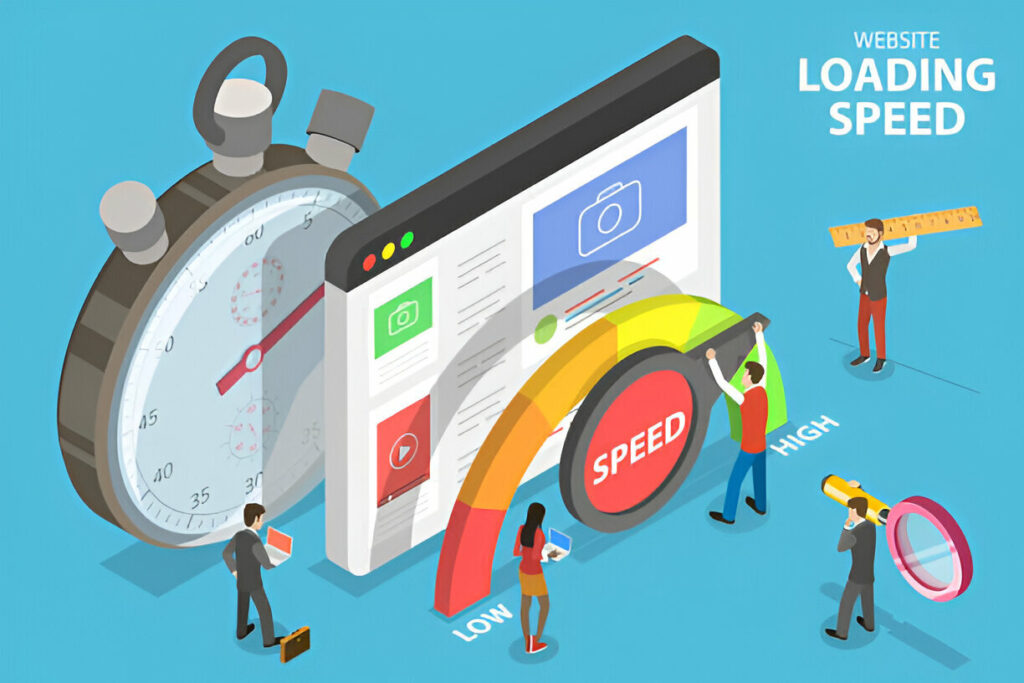
In today’s fast-paced digital world, website speed is more critical than ever. A slow-loading website can frustrate users, drive away potential customers, and negatively impact your search engine rankings. In this blog, we’ll explore why website speed is so important and provide actionable tips on how to improve it.
Why Website Speed Matters
- User Experience
- First Impressions Count: When visitors land on your site, you have only a few seconds to grab their attention. A fast-loading site creates a positive first impression and keeps users engaged.
- Reduced Bounce Rates: Slow websites lead to higher bounce rates. Users are likely to abandon a site that takes too long to load, resulting in lost opportunities and potential revenue.
- Search Engine Rankings
- Google’s Algorithm: Website speed is a key factor in Google’s ranking algorithm. Faster sites are more likely to appear higher in search results, increasing visibility and attracting more organic traffic.
- Mobile Friendliness: With the rise of mobile internet usage, Google prioritizes mobile-friendly sites. Fast loading times are essential for providing a good mobile experience.
- Conversion Rates
- Customer Retention: Speed can directly impact your conversion rates. Studies show that even a one-second delay in page load time can reduce conversions by up to 7%. Ensuring your website is fast can lead to higher sales and customer satisfaction.
How to Improve Website Speed
- Optimize Images
- Resize and Compress: Large images are a common cause of slow websites. Resize images to the appropriate dimensions and compress them to reduce file size without sacrificing quality.
- Use Modern Formats: Consider using modern image formats like WebP, which offer better compression and quality compared to traditional formats like JPEG and PNG.
- Enable Browser Caching
- Store Data Locally: Browser caching allows your website to store static files on a user’s device, so they don’t have to be reloaded every time they visit your site. This reduces load times for repeat visitors.
- Minimize HTTP Requests
- Combine Files: Reduce the number of HTTP requests by combining CSS and JavaScript files. This streamlines the loading process and speeds up your site.
- Use Asynchronous Loading: Load JavaScript files asynchronously to prevent them from blocking the rendering of other elements on your page.
- Use a Content Delivery Network (CDN)
- Global Reach: A CDN stores copies of your website on servers around the world. When a user accesses your site, the CDN delivers content from the nearest server, reducing load times and improving performance.
- Optimize Server Performance
- Choose a Reliable Hosting Provider: Your hosting provider plays a significant role in your site’s speed. Opt for a provider with a strong track record of performance and reliability.
- Enable Gzip Compression: Gzip compresses your website’s files, making them smaller and faster to load. This can significantly reduce the time it takes for your pages to be delivered to users.
- Reduce Redirects
- Streamline Navigation: Each redirect increases the time it takes for a page to load. Minimize the use of redirects to ensure faster navigation throughout your site.
- Optimize CSS and JavaScript
- Minify Code: Remove unnecessary characters, spaces, and comments from your CSS and JavaScript files. Minifying these files reduces their size and speeds up load times.
- Defer JavaScript: Delay loading JavaScript files until after the main content of your page has loaded. This ensures that essential content is visible to users more quickly.
- Monitor and Test Regularly
- Use Performance Tools: Tools like Google PageSpeed Insights, GTmetrix, and Pingdom can help you identify performance issues and provide recommendations for improvement.
- Regular Audits: Conduct regular speed audits to ensure your website maintains optimal performance. This helps you catch and address any new issues that may arise.
Conclusion
Website speed is a crucial element of user experience, search engine optimization, and overall digital success. By implementing these strategies, you can significantly improve your site’s performance, retain more visitors, and boost your search engine rankings. Prioritizing website speed is not just about keeping up with trends—it’s about creating a seamless and efficient online experience that meets the expectations of today’s users. Invest in speed optimization, and watch your website’s performance soar.
